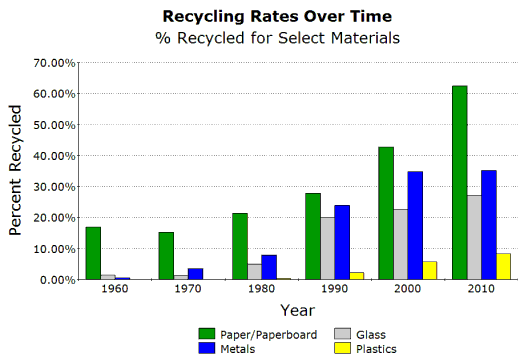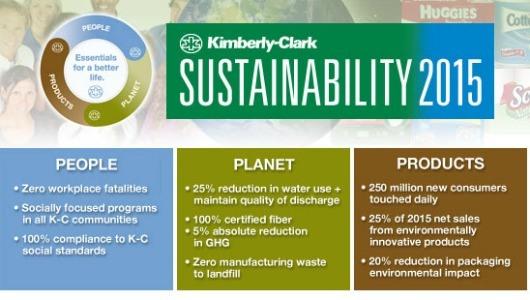Toledo Loses Drinking Water to Algal Bloom From Farm Runoff


A friend and I happened to be traveling through the far reaches of Western New York this weekend, and the weather was getting hot. So, we took a little detour to a park with a beach that fronted on Lake Erie. The place was pretty deserted except for a family who were picking up rocks and an old man looking for sea glass. The water was green with large sections that were brown. A couple of the kids were ankle-deep in the water. Hoping for a swim, my friend asked the mother if anyone swam around there. She made a face and said, “I wouldn’t.”
We didn’t and that was probably a good thing. On our way out we saw a sign that said, “No Swimming by Order of the Health Department.” When we got home we heard the news about Toledo, Ohio, which lies along the western edge of Lake Erie, where health officials had advised residents not to drink the water coming out of their faucets. The order also said not to use it for brushing teeth or give it to pets. Children and the elderly were also advised not to bathe or swim in it.
The advisory came after samples taken at the city’s Collins Park Water Treatment Plant had two readings for microcystins in excess of the recommended standard. Microcystins are toxins produced by blue-green algae, also known as cyanobacteria.
According to the EPA:
The cyanotoxins include neurotoxins (affect the nervous system), hepatotoxins (affect the liver),and dermatoxins (affect the skin). The presence of high levels of cyanotoxins in recreational water and drinking water may cause a wide range of symptoms in humans including fever, headaches, muscle and joint pain, blisters, stomach cramps, diarrhea, vomiting, mouth ulcers, and allergic reactions. Such effects can occur within minutes to days after exposure. In severe cases, seizures, liver failure, respiratory arrest, and (rarely) death may occur. There is evidence that long-term exposure to microcystins and cylindrospermopsin may promote the growth of tumors and may cause cancer.
Toledoans bought bottled water, and the National Guard gave out 33,000 gallons of clean water to people in the area.
The National Oceanic and Atmospheric Administration (NOAA) had warned that Lake Erie would see a significant harmful algal bloom (HAB) this summer, and they were correct. Scientists agree that the algal bloom is responsible for the contamination.
U.S. Representative Marcy Kaptur said, back in July, “The reemergence of harmful algal blooms in Lake Erie is an ecological and economic setback for communities along the coast. NOAA, Ohio Sea Grant, OSU, Heidelberg University and University of Toledo are developing tools to predict and target phosphorus, which will help in the fight to restore balance to Lake Erie’s ecosystem, Ohio’s greatest natural resource.”
Phosphorus, which is a key ingredient in agricultural fertilizer, along with warmer-than-usual weather both exacerbate the growth of the algae. As the bloom decays, it consumes massive amounts of oxygen, creating dead zones in the water, like the one in the Gulf of Mexico that is the size of Connecticut, resulting from agricultural runoff coming down the Mississippi.
While the cyanobacteria occur naturally in the water, their excessively-high concentrations are exacerbated by numerous human activities including the widespread use of chemical fertilizer, raising livestock near the water, the warming climate, and the presence of invasive zebra mussels in the water which eat other algae that would otherwise compete. An even larger, record-setting algal bloom occurred in Lake Erie in 2011, which at the time was blamed largely on zebra mussels. Though considered a fluke at the time, it seems clear that we are likely to see more of the same in the years ahead.
While some filtration techniques that combine activated charcoal with membrane technology appear to be effective at removing most of the microcystins from the water, the approach has not yet been widely adapted. A more systemic approach would look at the amount of phosphorus being dumped into the lake as agricultural runoff and make an attempt to reduce that. A number of techniques have been applied as demonstrated in this study from New South Wales.
On Monday, Mayor D. Michael Collins announced that the ban on drinking the water was being lifted and proceeded to drink a glass of water in front of reporters. He said that the level of the toxins had dropped to the point where it was safe to drink. So life in Toledo will return to normal, but what lessons have we learned from this event?
Image credit: Stefe: Flickr Creative Commons
RP Siegel, PE, is an author, inventor and consultant. He has written for numerous publications ranging from Huffington Post to Mechanical Engineering. He and Roger Saillant co-wrote the eco-thriller Vapor Trails. RP sees it as his mission to help articulate and clarify the problems and challenges confronting our planet at this time, as well as the steadily emerging list of proposed solutions. His uniquely combined engineering and humanities background help to bring both global perspective and analytical detail to bear on the questions at hand.
Follow RP Siegel on Twitter.
Review: MGM Resorts CSR Report


Las Vegas -- land of excess -- seems like a strange home for corporate responsibility. But even casinos (or "gaming and hospitality companies," as MGM Resorts prefers to be called) find value in looking deeply at social and environmental issues related to their operations. It makes sense since these are enormous operations. MGM Resorts employs 62,000 people at 23 resorts worldwide. Many of the 39 million people who visit Las Vegas annually will stay at an MGM property like Bellagio, Mandalay Bay, Mirage, Luxor, New York-New York or Circus Circus. That's a lot of people descending on a desert property, with a huge potential environmental and social impact. But as I learned, MGM Resorts is deeply focused on both employee satisfaction and minimizing its environmental footprint.
Diversity, philanthropy, sustainability
MGM's corporate social responsibility (CSR) program is focused on diversity and inclusion, philanthropy, and sustainability (the company's word for environmental efforts). Diversity is a core focus and approximately 65 percent of MGM Resorts' employees are minorities. MGM Resorts was the first organization in the gaming and hospitality industry to voluntarily adopt a formal diversity and inclusion policy in 2001, and the CSR reporting initiative grew out of the reporting efforts on that policy. Environmental efforts were added to the report in 2005.
The report is titled "Inspiring our World," which is also the name of the MGM Resorts' employee show. The Vegas-style production was developed by and for employees to "deepen the company’s corporate culture and motivate employees to excel in guest service while making positive contributions to the communities they call home, embracing diversity and being exceptional environmental stewards." According to Phyllis A. James, MGM Resorts International Executive Vice President and Chief Diversity Officer , the goal was to showcase the value of sustainability and share some of the big wins MGM Resorts had made in the world of sustainability. Unfortunately for us, the full video is unavailable online so we have to be content with b-roll.
The Inspiring Our World show is a fantastic example of using the company's core skill set -- entertainment -- to both drive employee engagement and share the message of sustainability in a non-linear way. No one says CSR reporting needs to come through boring .PDFs full of graphs and charts (although they can certainly help). Wouldn't it be incredible if MGM Resorts created a similar show in future reporting cycles to talk about their sustainability? That would win them some awards for innovation and certainly lots of press from the sustainability world.
Environmental issues
On the environmental end, MGM Resorts' accomplishments really came to life when I spoke with Cindy Ortega, MGM Resort International’s chief sustainability officer. "When we created our program, one of the objectives was to have credibility. At that time sustainability was a politically charged term. Energy and Environmental services was original name. We’ve framed whole program around conservation in terms of the concepts of carbon and global warming. Conservation is the proper route to those."
The 2013 report includes many graphs with information from all 23 resorts combined.
The groups' improved recycling rates are especially impressive and demonstrate a commitment to improvement over time.
Some of the charts in the report were a bit less successful, like the two below demonstrating efforts in energy and water conservation. The sidebars note some of the improvements, but it is difficult to suss out the change over time due to the lack of specific numbers on the graphs. Unfortunately this report didn't include any narrative beyond the sidebars, so it was difficult to understand how big these wins were, or how they fit into the overall environmental sustainability plan for the organization.
However, it was clear from my conversation with Ortega that there is a lot going on behind the scenes. For example, when I asked if MGM Resorts had considered its energy intensity by guest, she explained that the company had run the numbers but it was difficult to measure improvements because of the wide variation in seasonal temperatures impacting energy load.
Said Ortega: "We looked at a couple metrics to measure. Because a guest has such a different profile in the summer than in the winter, it doesn’t make sense to measure by guest. Intensity per square foot is more accurate. That gives us the ability to look across venues and share best practices."
She explained that her team has focused on granularity and detailed information-gathering in order to uncover effective paths to reducing energy and water use.
Water
Where MGM Resorts really shines, I learned from talking with Ortega, is in the area of water conservation. "Water is our most important natural resource," she explained. "Our very existence here [in Las Vegas] is based upon our ability to conserve water." She explained how water use works in Las Vegas. "All the water we use is borrowed from Lake Mead. After it gets used, it's pumped to sewage, cleaned and returned to lake." Everyone understands that it's bad to use sprinklers or spray in air because any water will go to the aquifier rather than back to the lake where it's desperately needed.
The biggest area of conservation for MGM Resorts, planting, "is almost an illusion to the guests. " Casinos "do a good job making things look like a big lush landscape when it's not." Ortega spoke with pride about MGM Resorts' accomplishments with the landscaping at the City Center Las Vegas building, which includes 76 acres of open space. The property manages all of that space with only 3 percent of its total water consumption. To put that in perspective, the average homeowner in Las Vegas uses 50 percent of its total water use outdoors to irrigate lawns and wash cars.
MGM Resorts sees a huge part of it's mission to work with employees and educate them about the impact of water use and the importance of water conservation. Phyllis James told me that employee training happens through a variety of methods: trainings, recharges, rallies, a company newspaper that comes out on a daily basis, and “pre-shifts” where the lead manager goes through key information for the day.
Exec summary vs. full-blown report
Unfortunately, few of the fantastic stories of connecting social and environmental sustainability made it into the "Inspiring Our World" report. This was the first year MGM Resorts has tried an executive summary instead of a full-blown CSR report, which led to a report focused on graphs and bullet-pointed lists of awards won by the company -- it seems there was little room left for a narrative explaining MGM Resorts' approach to sustainability.
The report featured a number of graphs comparing data between MGM Resorts' domestic operations and their resorts specifically in Clark County, Nevada, like the chart at right. While the significance of this breakout is likely meaningful to employees and other internal stakeholders, it was lost on me. This breakout was used for eight graphs without context, which represents a missed opportunity for MGM Resorts to explain to the larger sustainability community why it is tracking information in this manner. I was left wondering about where energy intensity by guest and comparisons to other hospitality companies fit into the story.
The report also neglected to share clear statements on boundary (what was included and what was left out), and goals for improvement on social and environmental sustainability.
At the end of the day, it's clear that MGM Resorts really excels at entertainment and storytelling, and it was a disappointment to not see these core competencies highlighted in the design and presentation of the report. There's no reason for CSR reports to be static documents, (although this is a natural starting point for many companies on the sustainability journey). Next time around, I hope the company has fun with its report and uses it to share some of the fantastic culture of diversity and sustainability it has created among the staff.
Images credit Inspiring Our World
When it Comes to CSR, Tiffany’s Shines Bright


A business that has existed since the 1830s and is entrenched in American culture would not necessarily feel compelled to ensure it is a leader in ethical and responsible business. But Tiffany & Co. has long been a sustainability leader within its sector. Twenty years before many luxury goods companies began to pay attention to the sourcing of raw materials and how people working within their supply chains were affected, Tiffany’s developed policies that are increasingly becoming more mainstream throughout the jewelry industry.
In its latest corporate social responsibility report, Tiffany & Co. outlines how it sources its precious metals, diamonds and gemstones, as well as the steps it has taken to ensure transparency while mitigating its environmental and social impacts.
One of the biggest challenges jewelry manufacturers confront is the provenance and traceability of their materials. In its efforts to avoid sourcing “blood diamonds,” Tiffany was one of the first backers of the Kimberley Process Certification Scheme (KPCS) over a decade ago. The company only sources rough diamonds from a supplier that only deals with certified mines, and from countries that are participants within KPCS. Tiffany in turn cuts and polishes those diamonds in-house — and mostly in the countries in which it sources those diamonds, as in the case with its cutting and polishing facility in Botswana. By keeping much of that work within those countries, Tiffany keeps good-paying jobs in cities such as Gaborone. Such wages lead to “beneficiation” funds; in 2013, Tiffany says such payments provided over $81 million in funds that could be dedicated to community economic development.
Tiffany’s sourcing of precious metals including gold, silver and platinum puts more emphasis on environmental sustainability. According to the company, it sources the vast majority of these metals from mines in the United States, a policy which helps reduce the company’s overall carbon footprint. Over half of the metals sourced are from recycled content, while 46 percent is traceable to an exact known mine. Only 2 percent of all precious metals are traceable back only to the supplier.
The focus on environmental stewardship has long set Tiffany apart from its competitors. To date the company is still strongly opposed to the proposed Pebble gold and copper mine in Alaska’s Bristol Bay, a projects critics say puts one of the world’s largest salmon fisheries at risk. Such a focus on the environment, in fact, is a large part of Tiffany’s corporate giving campaigns. Even the iconic Tiffany’s blue bags — quite possibly the most coveted packaging on earth — are Forest Stewardship Council certified and coated with film that allows them to be 100 percent recyclable (no word yet on the blue boxes, though).
It is easy to be dismissive towards Tiffany’s sustainability work — after all, we are talking about jewelry, not more essential goods such as food and clothing. But the work the company has done, often while swimming upstream in an industry tone-deaf to its social and environmental impacts, will help nudge more iconic companies in more industries to start doing the same. If a brand such as that of Tiffany’s is taking a stand, then in the mind of many consumers, there are compelling reasons why everyone should be more conscious about the products we buy.
Image credit: Wikipedia (Macakhanshumk)
Leon Kaye has lived in Abu Dhabi for the past year and is on his way back to California. Follow him on Instagram and Twitter.
Survey Finds That U.S. Leads the World in Climate Denial


This may confirm suspicions that many of us have already had. Besides leading the world in consumer debt and military spending, the U.S. can now add climate denial to that list. That is, according to a Global Trends survey by the U.K.-based market research firm Ipsos MORI. The study polled 16,000 people in 20 leading countries on eight different topics, including the environment.
Not only was the U.S. last, but it was last by a considerable margin. Consider the following question: "To what extent do you agree or disagree, the climate change we are currently seeing is largely the result of human activity?" A mere 54 percent of respondents from the U.S. agreed. Compare that with 93 percent from China and 84 percent from both Argentina and Italy. India, France, Turkey, Spain, Brazil, Belgium, South Korea and South Africa all scored 75 percent or higher. Other similar questions yielded similar results. These results were in alignment was data compiled by Pew Research a year ago, which examined the issues that people in various countries considered the greatest threats.
Tied for second-to-last with 64 percent were Great Britain and Australia. What do these three English-speaking countries have in common? Among other things, global media holding company News Corporation, the world's second-largest media conglomerate, owned by Rupert Murdoch. Canada, which is also blessed with Murdoch’s version of the news, was only slightly better, with 71 percent agreeing.
Riley Dunlap, an environmental sociologist at Oklahoma State University is not surprised. "It's the countries where neo-liberalism is most hegemonic and with strong neo-liberal regimes (both in power and lurking on the sidelines to retake power) that have bred the most active denial campaigns — U.S., U.K., Australia and now Canada.
That certainly seems to be the case here in the U.S. A study by Climatic Change, (cited by Mother Jones), describes 91 climate change counter movement (CCCM) organizations operating in the U.S., funded by a total of 140 foundations, to the tune of $900 million. The U.S. clearly has more big players with more to lose by acknowledging the reality of what is happening to our planet and why. Many of them, will, no doubt, flock to events like the Heartland Institute’s 9th International Conference on Climate Change, in, where else but Las Vegas? The event was billed as “biggest gathering of global warming skeptics in the world.” Good news for those who couldn’t make it. I understand that the Flat Earth Society is now accepting new members.
While the 32 percent of those surveyed who dispute the linkage between human activity and climate change are in the minority (14 percent say they are not sure), they represent a vocal minority indeed. Just look at the comments beneath any article about climate change (including, I predict, this one) and you will find a panoply of opinion-wielders, devoid of any scientific background, but ready to fight all comers on the issue, parroting, no doubt, the rhetoric and tone of Rush Limbaugh and his ilk. This brings us to another correlation. How does our ranking on this question match up with our international standing in education, when it comes to, say … science?
According to the 2012 Program for International Student Assessment (PISA), which measured the performance of high school students from 35 countries around the world on standardized tests, the U.S. ranked 27th, averaging 497 points in science, and dead last in mathematics with a score of 481. Who scored first? China did, in both categories, with scores of 613, and 580, respectively. Not all of the other countries followed suit, but still, there might just be a connection there. People who understand science are more likely to understand the difference between facts and opinions.
We’ve gotten our report card and the grade was not a good one. What do we do to compete with the Limbaughs and Kochs of this world to spread the message that is so vitally important to those people who are so unwilling to believe it?
Image credit: Flickr/eutrophication&hypoxia. Graph courtesy of RP Siegel.
RP Siegel, PE, is an author, inventor and consultant. He has written for numerous publications ranging from Huffington Post to Mechanical Engineering. He and Roger Saillant co-wrote the eco-thriller Vapor Trails. RP sees it as his mission to help articulate and clarify the problems and challenges confronting our planet at this time, as well as the steadily emerging list of proposed solutions. His uniquely combined engineering and humanities background help to bring both global perspective and analytical detail to bear on the questions at hand.
Follow RP Siegel on Twitter.
PepsiCo and The Nature Conservancy Collaborate On Recycling, Drinking Water


Plastic waste is inundating urban, rural and wilderness landscapes and inland waterways, as well as our ocean waters. Besides the visual blight, plastic waste kills, seriously injures or damages wildlife and domesticated animals. The slow degradation of synthetic plastics, moreover, releases a mix of toxic chemicals into our atmosphere, land and waters, poisoning the natural ecosystems and resources that form the foundation of our economy and society.
The average American tosses away some 185 pounds of plastic per year, an estimated 50 percent of which is used only once before being discarded. Overall, the recycling rate for plastics in the U.S. is around 42 percent, a rate that public- and private-sector organizations are working to raise, both for self-serving, as well as more altruistic, motivations.
Late last week, PepsiCo and The Nature Conservancy (TNC) announced the launch of “Recycle for Nature,” a five-year partnership that will see the two organizations place recycling bins at gas stations and convenience stores across the U.S. In addition to reducing plastic waste by spurring more recycling, the initiative aims to save and restore 1 billion gallons per year of drinking water sourced from five of the most heavily populated and scenic U.S. waterways, PepsiCo and TNC explain in a press release.
Plastics, recycling and drinking water
Up the supply chain from store shelves, manufacturing plastics takes a heavy toll on ecosystems and human health, as well as long-term socioeconomic development potential. The total natural capital cost of plastic use in the consumer goods industry – a measure of the loss or degradation of natural resources and ecosystems – exceeds $75 billion annually, according to a United Nations Environment Programme (UNEP) report.
Despite the massive volume and triple-bottom-line impacts of plastic products produced today, businesses don't factor the post-use costs of plastic products into their product development plans. Furthermore, the total economic, social and ecological costs of used plastics traditionally aren't factored into businesses' operations, accounts or performance. That's gradually changing as awareness of the ubiquity of plastic waste and the seriousness of the threats its rapid rise poses.
Environmental organizations such as TNC – the world's largest environmental conservation organization – have been at the forefront when it comes to raising public awareness and focusing attention on the threats and risks associated with escalating levels of plastic waste. Businesses have become increasingly aware of the costs resource scarcity and degradation have on their activities, as well as on the size and growth potential of the consumer goods market.
Besides searching for ecologically-friendly alternatives, entrepreneurs and well-established businesses alike are increasingly recognizing the potential value of recycling or reusing plastic waste. Facing chronic shortages of recycled materials for their business processes, manufacturers in the Southeast are working to boost recycling rates throughout the region through the Southeast Recycling Development Council (SERDC).
PepsiCo-TNC's “Recycle for Nature” is an example of how the climate between environmental organizations and multinational businesses has shifted from one characterized by antagonism toward one of cooperation. Through the program, the partners hope to drive the U.S. beverage container recycling rate above 50 percent by 2018 from the current 42 percent as measured by the American Beverage Association.
The Recycle for Nature partnership
The project is part of PepsiCo's collaboration with Walmart to increase recycling and investment in the Closed Loop Fund, a program that provides financing to municipalities and other organizations that aim to provide greater public access to recycling “when an where they need it.”
Conducting a national survey, PepsiCo found that a lack of recycling bins at retail outlets may well be constraining the U.S. recycling rate. Away from home, recycling bins are available just 12 percent of the time. Moreover, 81 percent of Americans said they would recycle more beverage containers, according to PepsiCo's national survey results.
"Most consumers want to recycle when they're away from home – there just aren't enough convenient places to do it," PepsiCo Americas Beverages CEO Al Carey was quoted in the press release.
"This is a huge opportunity that has been largely unaddressed until now. The easier we can make it to recycle, the more likely people are to recycle; and by giving consumers the added incentive of helping protect our watersheds, we can make an impact."
Protecting drinking water by recycling plastic
Besides turning what would be plastic waste pollution into new products, “Recycle for Nature” can also help protect U.S. drinking water sources in five key locations “that supply water to more than 35 million people through some of the nation's most populated and beautiful waterways,” the partners highlight. These are the:
- Colorado River;
- Denver's Front Range forests;
- Arizona's Verde River;
- Kings River in northwest Arkansas; and
- North Carolina's Cape Fear River.
Aiming to save and restore 1 billion gallons of water per year from these waterways over a five-year period, “PepsiCo [will] make an additional annual donation to TNC for every one-point increase in the U.S. beverage container recycling rate." That could yield as much as $1 million per year for the program over its five-year term.
PepsiCo and TNC intend to begin by expanding a pilot program that PepsiCo has been running in collaboration with Kum & Go convenience stores and gas stations in Tulsa, Oklahoma. The goal is to increase the number of recycling bins in the area 10-fold over the near-term. PepsiCo will also work jointly with TNC to “help raise awareness of recycling and increase recycling efforts in their local communities.” TNC is present in all 50 states and counts over 1 million people as members.
For its own part, PepsiCo has reduced water use at its production plants over 20 percent per unit since 2006. Joining with other organizations, it has also provided access to clean, safe drinking water for 3 million people around the world. Awarded the Stockholm Industry Water Award and the U.S. Water Prize in 2012, PepsiCo in 2013 announced it would provide access to clean drinking water to an another 3 million people over the ensuing three years.
*Image credits: 1) Grand Vista Group Holdings; 2) Green Nature; 3) Las Vegas City Life
The Millennials Perspective on Impact Investing


Editor's Note: This post originally appeared in Green Money Journal. Click here to view more posts in this series.
By Cliff Feigenbaum
Green Money Journal's new issue has an impressive set of five articles that all come from millennial voices and deal with their approaches to investing and business.
In the July edition, Liesel Pritzker Simmons of Blue Haven Initiative walks us through the experiences that have shaped her thoughts on investing, while offering some suggestions for financial advisors; Julius Tapper of TD Bank Group provides a personal story about the importance of aligning identities in the investment world; Morgan Simon of Pi Investments & Transform Finance pushes us to achieve more community accountability and more actively engage the people that matter most in impact investing; Brian Weinberg of Nexus describes the global organizing of millennials taking place through Nexus; and Justin Conway of Calvert Foundation provide some observations of how millennials are already changing the investment conversation.
Take some time to read these article excerpts, below, from some millennial leaders who are actively pushing the envelope in helping to shape how not just millennials, but all of us, think about and engage in investing and business. We hope you find some of their perspectives exciting and challenging, and ultimately cause you to be more inspired in your work to build a better world. We’ve certainly got a lot of work to do together.
Design, Equity and Public Health Outcomes


Can good design improve the health of the public?
This is the question rattling the brains of architects and urban planners as they convene frequently at conferences to trade best practices on helping cities to recover from the sins of post-industrial buildings by leveraging design as a mitigating cure-all to detrimental health statistics plaguing communities around the world.
For Thomas Fisher, professor of architecture and dean of the University of Minnesota, design is capable of serving as a means through which we build healthier environments and influence healthy human behavior.
"It’s not just keeping people safe or meeting the building codes or fire codes, it is really a responsibility about keeping populations healthy," Fisher told Fast Company.
Fisher continues that battling rising trends in public health — namely obesity due to car-dependent communities and asthma attributed to inadequate ventilation and indoor chemical contamination in older buildings — presents tremendous design opportunities to broaden the craft and discipline of architecture to consider social constructs and impact through smarter building.
What I believe is lacking in Fisher’s argument, however, is a call for all-inclusive design and planning polices that would call for the equal participation of those communities typically missing from broader smart growth conversations.
Smart growth policy discussions have the power to support economic development, energy conservation and cost savings to cities, as well as produce cumulative impacts on urban form, travel, behavior and health.
If we seek to use design as a catalyst for improving the health of the public, we are also then charged with clearly defining measurable outcomes that benefit both resourced and under-resourced communities in three fundamental ways. First, we must guarantee greater social equity in our effort to create healthier and more inclusive communities. Second, we must define metrics by working with public health officials to assess and identify public health outcomes as a result of smarter, human-centered design. Lastly, and most importantly, we must require processes that include the communities in which we plan to re-design for the better.
Good design breeds opportunity for social equity
Kristen Jeffers, MPA and publisher of The Black Urbanist, argues in her essay that design alone cannot save communities, especially within the context of oversized and overpriced new urban projects that price people out of their neighborhoods. Jeffers shared with me that a lot of times firms just design.
“Just as we love compact urban development, we need to think about cooperative economics,” she proffered.
Smarter buildings retrofitted with innovative green technology, LEED frameworks and walkable environments that benefit only well-resourced members of society miss out on the opportunity to actively engage communities that are in the most need of this sort of growth and construct.
A study from the U.S. Green Buildings Council titled Understanding the Relationship Between Public Health and the Built Environment explicitly states that “buildings that displace existing communities, push out residents or businesses with lower incomes, eliminate jobs or replace good jobs with substandard ones, or expose people to unhealthy conditions cannot really be said to be sustainable from a triple bottom line perspective, even if they are 'high performance' in other ways.”
Jeffers calls for a comprehensive, all-inclusive list of design and planning practices that would remove voids from needy neighborhoods and encourage educational recourse, food access, physical activity and the like.
Defining public health metrics
The Department of Environmental Health at the Harvard School of Public Health released a study in partnership with the Boston Public Housing Authority measuring the impact of indoor air quality on low-income residents. Published in the Environmental Science and Technology journal, researchers concluded that green buildings have the potential to improve the health of low-income residents.
Abstract: We observed significant decreases in multiple indoor exposures and improved health outcomes among participants who moved into green housing, suggesting multilevel housing interventions have the potential to improve long-term resident health.
“The thing I like most about this study, even if we can’t tweeze out exact causal agent we’re showing that comprehensive housing reform and smart rehabilitation of buildings and urban planning is important for low income neighborhoods as well and has the potential to kill a lot of birds with one stone. You can improve the environment and improve health at the same time,” Meryl Colton, lead author in the study, shared with me in an interview.
Drawing public health professionals into the architecture/public health conversation also adds tremendous benefits. Public health professionals come armed with data and the skills to design and conduct studies that can greatly influence and measure the intended impact of building for improved public health across communities.
Leveraging community engagement in the planning process
The gatekeepers to smarter, healthier design should not solely be policy makers, planners, architects, engineers or public health officials. Building all-inclusive communities calls for actively including the intended “community” in the planning, design and execution processes.
Successful community engagement solicits the perspectives, talents and skills of members of one or more communities to articulate their needs, concerns, visions and expectations in ways that result in better, healthier outcomes and more livable environments for residents. For example, advocacy groups can bridge the gap to engage residents and planners. Academic institutions, community health councils and other special interest groups are capable of sharing research to help planners and architects understand the acute problems of the community.
From these access points focus groups, community meetings, and public presentations can be birthed.
Re-thinking design as a solution to solving public health problems is a step in the right direction, especially in an industry that, as Fisher described in the article, has been “mystified”. But in order to be effective at reaching the desirable public health outcomes, architects and planners and those involved in the discussion of smart growth must attach themselves first to the work of peeling back the layers of all-inclusive design strategies that will serve the greater community—not just the all-too fortunate few.
Additional resources for further research and discussion:
Impact of the built environment on public health | CDC
Health Impact Assessment for Improved Community Design | CDC
Social Equity in the Built Environment | USGBC
The Built Environment and Its Relationship to the Public’s Health: The Legal Framework | National Institute of Health
Building Healthy Places with People and for People: Community Engagement for Healthy and Sustainable Communities | Prevention Institute
Image courtesy of BitHead Flickr
Sherrell Dorsey is a social impact branding and communications strategist, social entrepreneur and advocate for environmental, social and economic equity in underserved communities. Visit Sherrell at www.sherrelldosey.com and follow her on Twitter and Instagram @sherrell_dorsey.
Bigger Fish Eye Mid-Tier Smart Energy Storage Market


Bigger fish are taking greater interest in the mid-tier energy storage market, looking to capitalize on technological advances and the introduction of energy storage mandates and development programs by governments in California, Hawaii, New York and Puerto Rico.
Following the path of entrepreneurial startups such as Santa Clara, California's Green Charge Networks, Sharp Electronics on July 29 announced its SmartStorage solution is now available throughout the Golden State.
Akin to Green Charge's GreenStation, Sharp's SmartStorage system employs the latest in lithium-ion (Li-ion) battery storage technology and intelligent demand response (DR) software algorithms to enable commercial and industrial utility customers to better manage electricity consumption -- specifically demand charges. In contrast to standard residential rates, which have been falling, utility demand charges have been rising at some 10 percent per year.
Sharp's mid-tier SmartStorage Solution
Highlighting the 15 percent-plus hike in demand charges imposed by San Diego Gas & Electric (SDG&E) and Southern California Edison (SCE) this past June, Sharp says SmartStorage can lower demand charges for building and facility owners whether installed as a stand-alone solution or deployed as a component of a solar photovoltaic (PV) energy system.
Sharp says SmartStorage users can expect a return on investment yield of 15 percent during the first year of operations, with internal rates of return of 20 percent possible. Commenting on the company's entry into California's nascent commercial energy storage market, Sharp Energy Systems and Services Group General Manager Carl Mansfield stated:
“We are confident that our SmartStorage product brings Sharp’s innovation, reliability and quality to the emerging energy storage market. Our product’s combination of cutting-edge hardware, integrated with Sharp’s unique software, and backed by our 10-year O&M service and performance guarantee provides a turnkey solution that works widely for commercial and industrial business owners."
A clean-energy game-changer?
Developed at Sharp Laboratories of America in Camas, Washington, Sharp intends to expand SmartStorage availability to other states in the second half of 2014. Besides California, Hawaii, New York and Puerto Rico are likely candidates, as is the Canadian province of Ontario.
On July 30, Austin, Texas-based Ideal Power announced the signing of a multi-year purchase agreement that will see SmartStorage systems equipped with Ideal Power's 30 kilowatt (kW) battery converters, which combine the functions of DC-AC inverters and battery chargers. Ideal Power's battery converters are also used by Green Charge Networks.
Sharp's SmartStorage and other mid-tier intelligent energy storage solutions will enhance access and alter the power and energy market playing field in California, according to Brandon Conard, chief strategy officer at integrated energy solutions company HelioPower:
“HelioPower views SmartStorage as a game-changer for clean-energy in California. Previously, there was no good solution for buildings with either crowded roofs or high demand charges. We have reviewed a number of other emerging storage offers and believe that SmartStorage, backed by Sharp’s world-class combination of technology, reliability and service track record, is the best product in the market.”
HelioPower manages more than 4,000 solar and clean energy facilities in California. Sharp is working with clean energy project developers around the state with an eye towards ramping up SmartStorage deployments. The intelligent energy storage solution has been rigorously tested to assure quality and validate reliability and performance over an 18-month period at a commercial building pilot deployment in downtown San Diego, according to the company.
*Image credits: 1) Sharp Corp.; 2) Eamon Keane, Seeking Alpha; 3) Ideal Power
Kimberly-Clark & Greenpeace: #ForestSolutions Twitter Chat Recap


Five years ago, Kimberly-Clark and Greenpeace established a framework for collaboration to work positively toward long-term solutions to conserve and protect forest resources worldwide. Appropriately marking the traditional “wood” anniversary, K-C and Greenpeace hosted a first-of-its-kind Twitter chat on August 5th, 2014, to discuss progress and future goals.
The chat covered topics such as how K-C and Greenpeace resolved their differences five years ago, what they've achieved since, how their relationship thrives, and where the two are moving next.
Twitter chat guests included:
- Peggy Ward (@PeggyatKC), Kimberly-Clark’s sustainability strategy leader for North America consumer tissue
- Richard Brooks (@RBGreenpeace), forest campaign coordinator for Greenpeace Canada
- Rolf Skar (@RolfSkarGP), forest campaign director for Greenpeace USA
Facilitators were Journalist and Social Media Strategist, Aman Singh (@AmanSinghCSR), and TriplePundit Founder and Publisher, Nick Aster (@NickAster).
The conversation took place at #ForestSolutions. In case you missed it, the Storify Twitter Chat summary is below.
About Kimberly-Clark
Kimberly-Clark Corporation (NYSE: “KMB”) and its well-known global brands are an indispensable part of life for people in more than 175 countries. Every day, nearly a quarter of the world’s population trust K-C’s brands and the solutions they provide to enhance their health, hygiene and well-being. With brands such as Kleenex, Scott, HUGGIES, Pull-Ups, Kotex and Depend, Kimberly-Clark holds No. 1 or No. 2 share positions in more than 80 countries. To keep up with the latest K-C news and to learn more about the Company’s 142-year history of innovation, visit www.kimberly-clark.com or follow us on Facebook or Twitter.
IBM and Dow to collaborate in Ethiopia sanitation programme


Five employees from chemicals giant Dow and three from technology colossus IBM are to participate in a joint global pro bono project with International Medical Corps (IMC) that will promote and support a campaign to improve sanitation and hygiene behaviour in Wolayita, Ethiopia.
IMC delivers health care services to those impacted by war, natural disaster and disease with programs that focus on training and helping devastated populations return to self-reliance.
Dow’s team will create a social marketing programme to drive behavioural changes required to create sustained resilience, while IBM will assess, recommend, and design methodologies that can measure how resilient a community is, particularly in the realm of public health.
Dow’s Leadership in Action (LIA) programme and IBM’s Corporate Service Corps have come together with the assistance of nonprofit, PYXERA Global.
“Collaboration is instrumental in a project of this scope because no one company holds all the solutions to the world’s problems,” said Michelle Langley, programme leader for Dow Sustainability Corps, Global Disaster Relief and STEM. “More than 35% of the world’s population lacks access to improved sanitation. By aligning strategies and leveraging each other’s employee talent, Dow and IBM can leave a lasting impact on the region.”
"By bringing together the top talent and emerging leaders at IBM and Dow, we are able to strengthen the impact we make on the community as well as deepen the experience for the employees, ultimately building lifelong relationships and sustainable solutions," added Gina Tesla, Director, IBM Corporate Citizenship.
Picture credit: © Clive Chilvers | Dreamstime.com